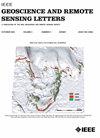Inversion-Driven Attenuation Compensation Using Synchrosqueezing Transform
IF 4
3区 地球科学
Q2 ENGINEERING, ELECTRICAL & ELECTRONIC
引用次数: 15
Abstract
Attenuation is a fundamental mechanism as seismic wave propagates through the earth. The loss of high-frequency energy and concomitant phase distortion can be compensated by inverse利用同步压缩变换的逆驱动衰减补偿
衰减是地震波在地球上传播的一种基本机制。通过逆${Q}$滤波可以补偿高频能量损失和伴随的相位畸变,从而提高地震资料的分辨率。由于衰减过程取决于时间和频率,因此通常在时频域中进行。采用同步压缩变换(SST)实现逆${Q}$滤波方案,该方法为非平稳信号提供了高度局域化的时频表示。但是,由于涉及能量放大,振幅补偿过程不稳定。为了使其稳定,在海表温度域中将振幅补偿视为具有l1范数正则化项的逆问题。采用迭代重加权最小二乘算法求解正则化逆问题。综合算例和实际数据算例验证了该方法的稳定性和有效性。
本文章由计算机程序翻译,如有差异,请以英文原文为准。
求助全文
约1分钟内获得全文
求助全文
来源期刊

IEEE Geoscience and Remote Sensing Letters
工程技术-地球化学与地球物理
CiteScore
7.60
自引率
12.50%
发文量
1113
审稿时长
3.4 months
期刊介绍:
IEEE Geoscience and Remote Sensing Letters (GRSL) is a monthly publication for short papers (maximum length 5 pages) addressing new ideas and formative concepts in remote sensing as well as important new and timely results and concepts. Papers should relate to the theory, concepts and techniques of science and engineering as applied to sensing the earth, oceans, atmosphere, and space, and the processing, interpretation, and dissemination of this information. The technical content of papers must be both new and significant. Experimental data must be complete and include sufficient description of experimental apparatus, methods, and relevant experimental conditions. GRSL encourages the incorporation of "extended objects" or "multimedia" such as animations to enhance the shorter papers.
 求助内容:
求助内容: 应助结果提醒方式:
应助结果提醒方式:


